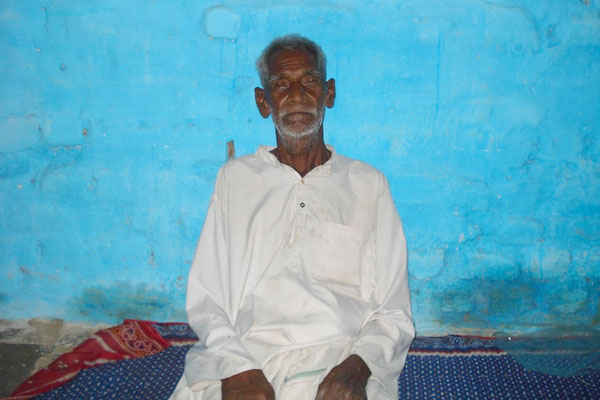Kothi, Kevadia Colony affected Village
4–5 minutes
“We have the river nearby. We had to stop the sewage from the colony (from flowing into our rivulet).When that acidic sewage flowed (into our rivulet), many of our livestock died; many buffaloes died too. We were also using that water for drinking. … Our river flows through many gorges. And we use that flowing water for drinking.
“And so, we stopped that (sewerage) water from flowing in. We showed our strength; we went to their offices, and we said “stop the flow of this filthy water”… “Then, they diverted the flow into other gorges and rivulets. When our buffaloes and calves went grazing, they drank that water. The stomachs of many young calves bloated up; and the calves died. So again, we went to the office and told them that our young calves are dying… And we went to them again and again. Finally, they built wells for the filthy water. One filter (plant) was installed nearby. That is when the filthy water stopped flowing (into our rivulets)…”, Soniben.
“We are already as good as dead. They have already snatched away our lands. What good is it simply staying alive? And listen, sister, now our children are just like migrant birds, that come, eat the grain (and fly away). Earlier when the construction of the dam was going on, this colony was full of people and we at least earned (our livelihood) by working as labourers for them. But imagine; after the dam is completed, this colony will vanish and so will these lands. Where will our children go? To (cities like) Surat? How will they survive without land? We survived by constructing the dam, we worked as labourers, we washed dishes for the colony residents; but our children? Whose dishes will they wash? They will have to fly away every day and like birds returning to their nests, return only in the evening. (Without land) our children will meet the same fate as us. We at least cultivated our lands while we had them, but now there is no land left for our children. Not even a piece of land remains. Not even to piss upon! No one has anything left. Just think, what then will be the condition of our children? If I begin to tell you the story of our life, sister, I myself will begin to cry. If the government gives us land, we would be happy … (That is why) our sit-in continues even now. If the government gives us our due, our children can be happy. That is our hope.”
This interview details the history of the early struggles of the adivasis of the six villages of Kevadia, Kothi, Limdi, Navagam, Gora and Waghadia in the Narmada district of Gujarat Their lands were acquired in 1961 for the construction of the Sardar Sarovar Dam colony, then named the Kevadia Colony. It tells us how the people of these six villages resisted the dispossession of hundreds of adivasi families who lost their agricultural lands, forests, grazing lands, water sources, and much more. This interview covers only a few of the many small and big struggles they have had to wage and they continue to wage.
After the completion of the dam, the government has constructed a huge statue of Vallabhbhai Patel, the iconic leader of the independence movement, at Kevadia Colony. The statue has been named as The Statue of Unity and the Government has changed the name of Kevadia colony and it has been renamed Ekta Nagar, severing even its nominal connection with the adivasi (tribal) villages it has destroyed. This interview will continue to remind us how the Kevadia colony that today boasts of housing the tallest statue and one of the biggest dams in the world has been built by depriving hundreds of adivasi families of their fundamental rights and dignity. By describing the condition of the scheduled tribe communities whose lands were acquired for the SSP, it shows us the underbelly of the ‘Gujarat Model’ of development in which SSP holds such a central position and which the rest of the country is now trying to emulate.


Interview Duration:
0:49:47
Language:
Gujarati, Subtitles in English
Subtitles can be switched on and off by clicking ‘CC’ button at the bottom right of the video